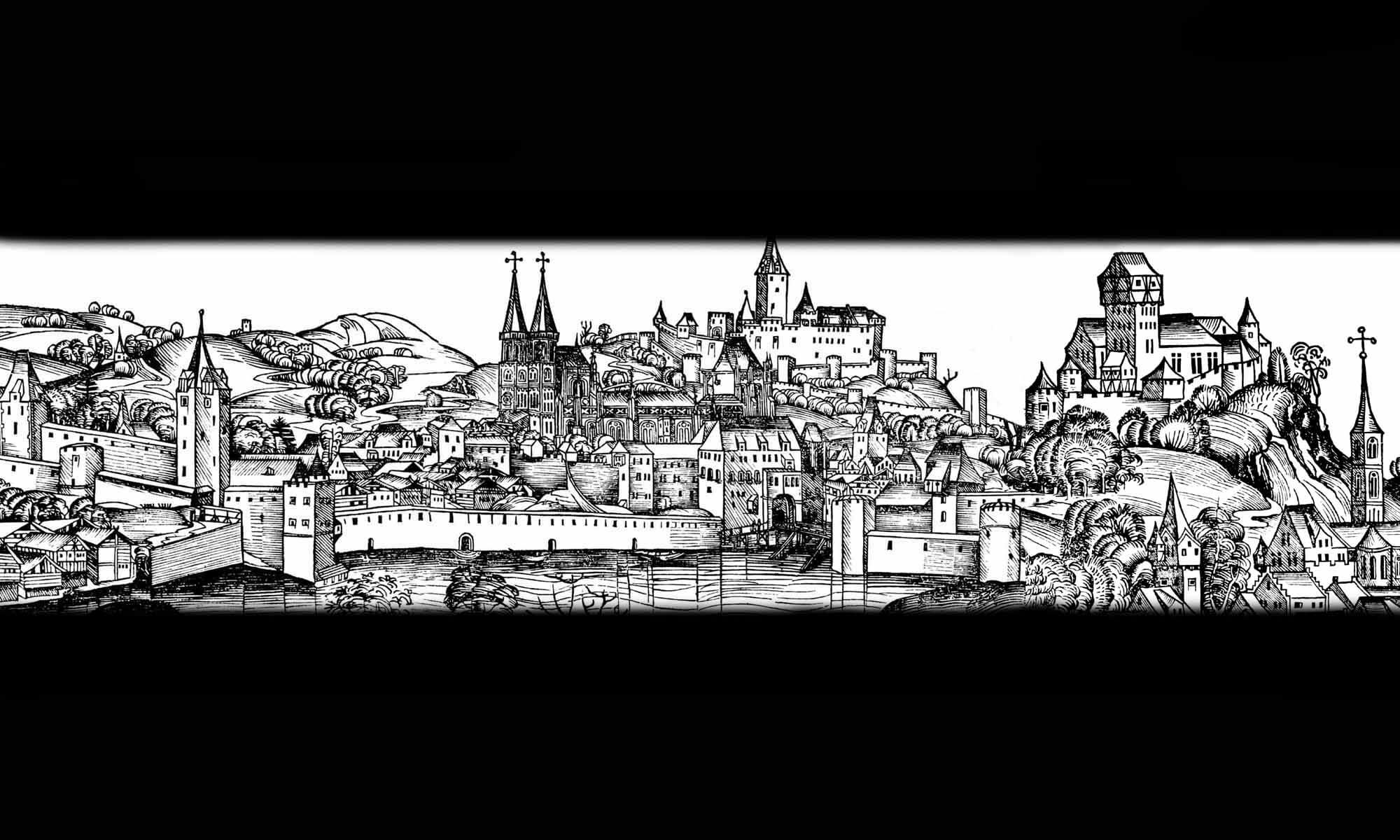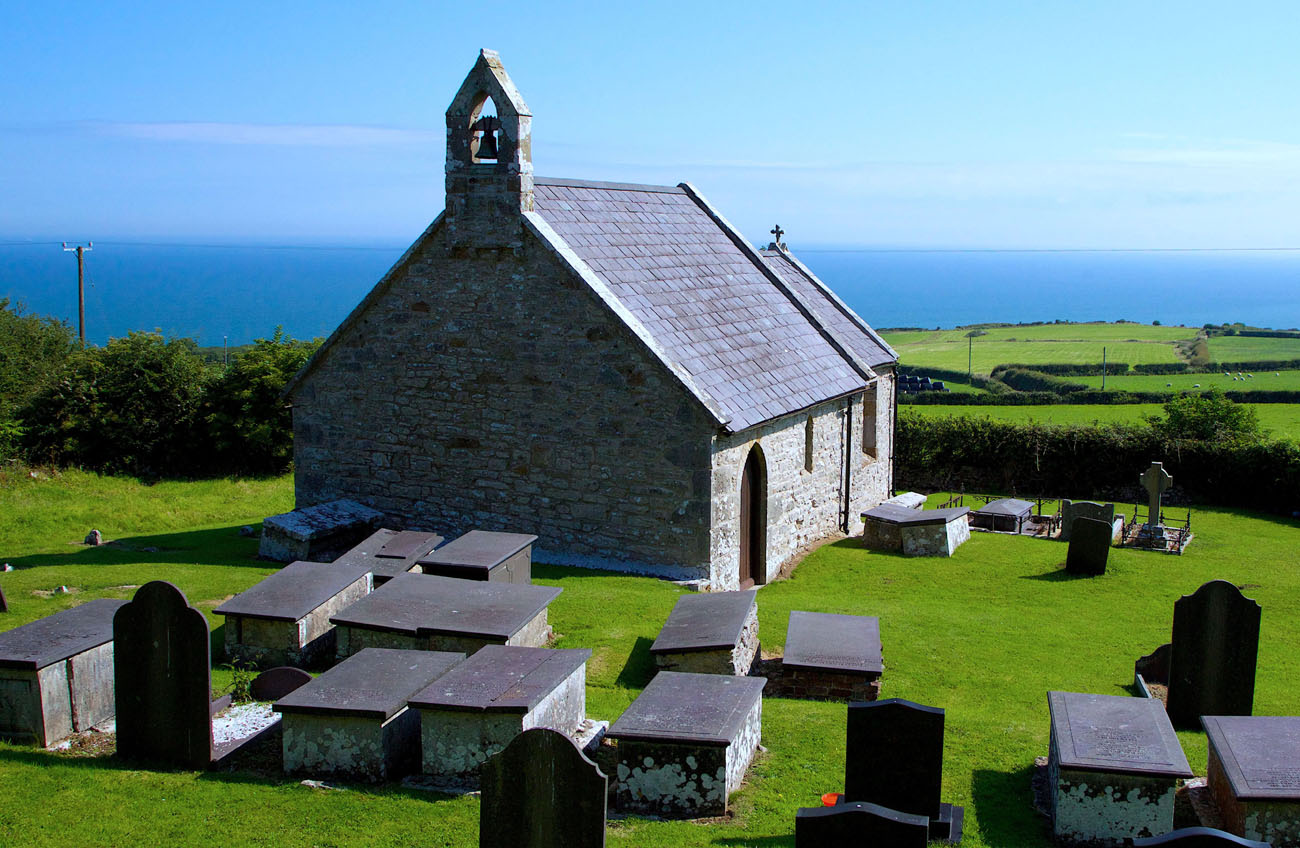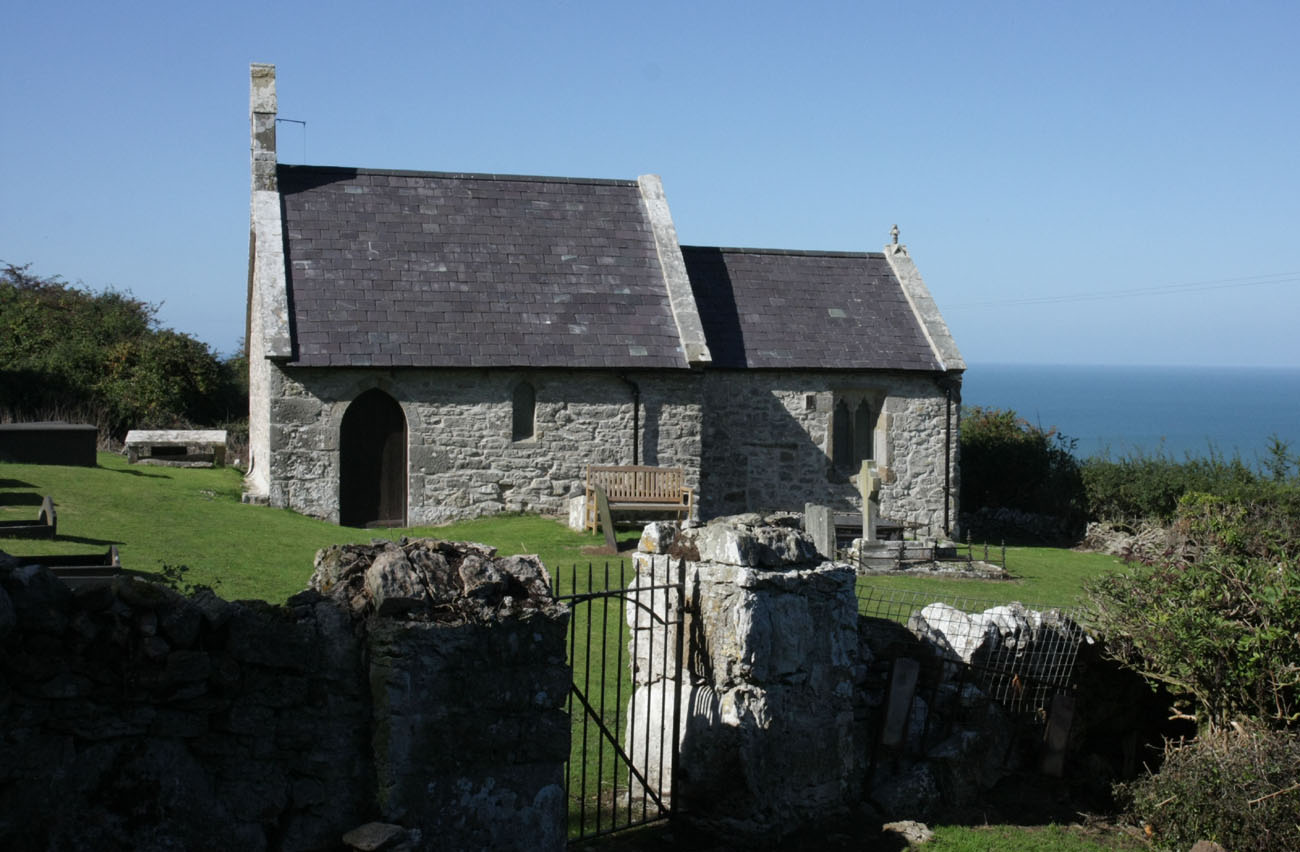History
The church of St. Michael in Llanfihangel Din Sylwy was first mentioned in records in 1254, but the late Gothic stone structure was not built until the early 15th century. By the mid-19th century, the church must have been in very poor condition, as during the renovation undertaken in 1854, among other things, the entire western wall of the nave was rebuilt.
Architecture
The church originally consisted of a short, almost square nave measuring 5.5 x 5.1 meters and a narrower and lower chancel, 5.1 x 3.6 meters. The latter was illuminated from the east by a three-light window with tracery topped with cinquefoils, and from the south by a two-light window with similar tracery. The eastern one was larger and placed in a pointed jamb, and the smaller southern one in a four-sided jamb. The eastern one was additionally equipped with a pointed, drip archivolt. The nave from the north and south was lit with much simpler, narrow, lancet windows. The entrance led through a portal set in the western part of the southern wall of the nave and through the priest’s portal in the chancel. Inside, both parts of the church were covered with an open roof truss with arched collars. The chancel was separated from the nave by a pointed arcade with moulding dying at the side walls.
Current state
The southern entrance, as well as the rebuilt west wall, comes from the early modern period, but the original late Gothic windows in the eastern and southern walls of the chancel have survived. The portal in the chancel is currently blocked. Inside, a Gothic chancel arcade has been preserved. Of the original church furnishings, a 14th/15th-century font remains, and a late-medieval wooden roof truss in the chancel is also visible.
bibliography:
Haslam R., Orbach J., Voelcker A., The buildings of Wales, Gwynedd, London 2009.
Salter M., The old parish churches of North Wales, Malvern 1993.
The Royal Commission on The Ancient and Historical Monuments and Constructions in Wales and Monmouthshire. An Inventory of the Ancient Monuments in Anglesey, London 1937.


